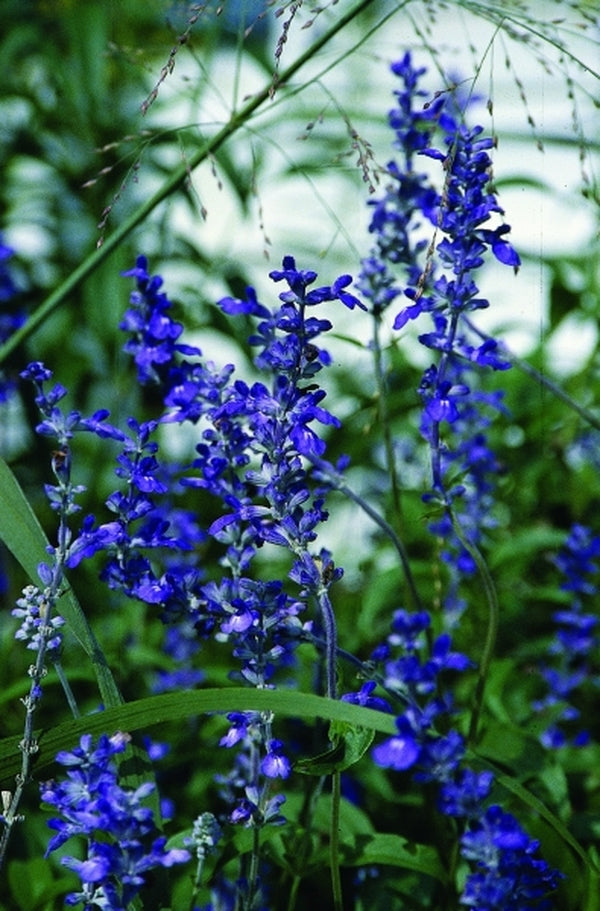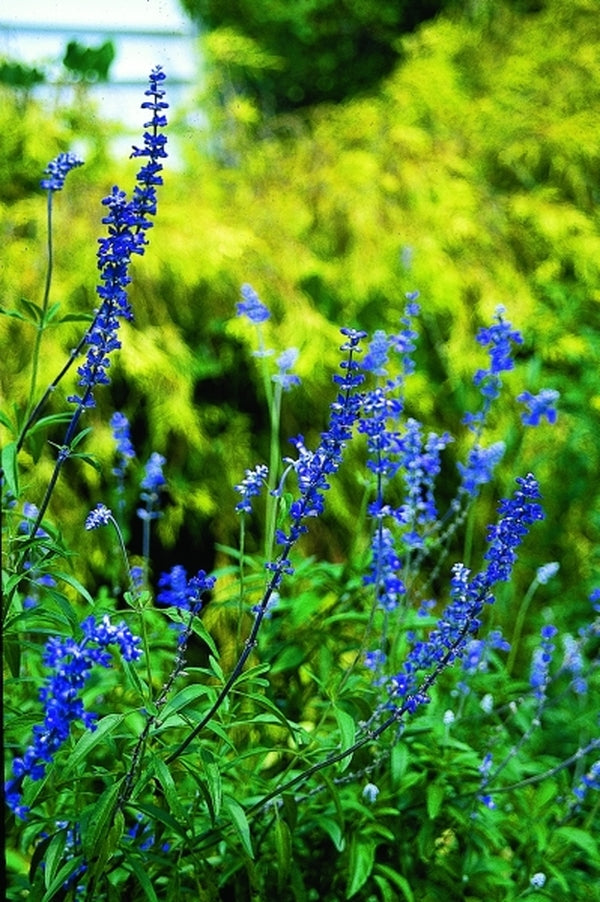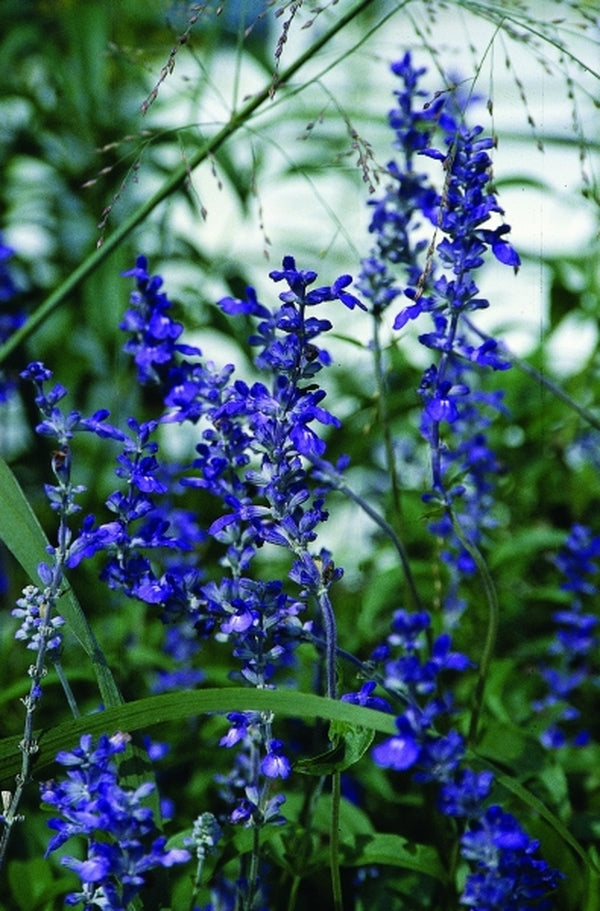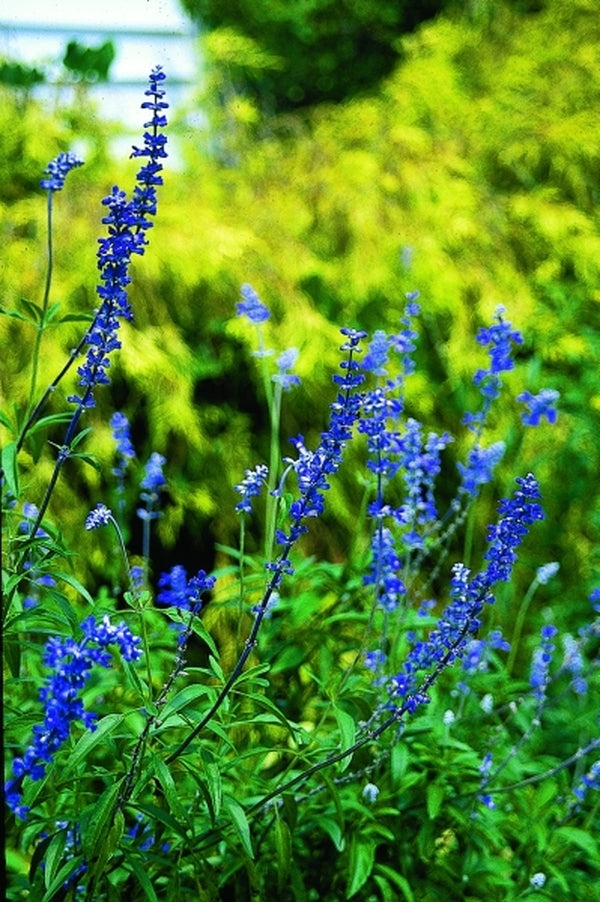Salvia farinacea
Mealy Cup Sage
This plant is not currently for sale. This is an archive page preserved for informational use.
Shop Available SalviaItem #: 5015
Zones: 7b to 10b
Dormancy: Winter
Height: 30" tall
Origin: United States
Pot Size: 3.5" pot (24 fl. oz/0.7 L)
This superb US native (Louisiana to New Mexico) is one of the finest and most floriferous plants that we grow. Each clump of 30" tall stalks ends in a 6-8" spike of medium-blue flowers. For us, the clumps begin flowering in June and continue, without interruption, until the first hard frost. Old clumps will reach 18" in diameter. Salvia farinacea should be reliably winter-hardy to 0 degrees F, if planted in well-drained soils and not cut back until spring.
Maintenance:
Salvia farinacea is a very low maintenance plant. Most often, all it needs is to be cut to the ground at some point between a hard frost in fall and before new growth starts in spring. It can be cut to the ground in late summer if it has become shabby. It will soon be back in growth and blooming up to frost. Most years it does not need this treatment.
Salvia farinacea is a clump former and not a runner so it does not need to be reined in. It can produce some seedlings which in some gardens would be a sign of success but if one is attempting to maintain a particular clone, then it might be best to eliminate the seedlings because they might not be true to type.
Growing Conditions:
Full sun all day produces the most bloom, sturdy self supporting stems and clean foliage. Powdery mildew is rarely a problem when grown in sun but can be a problem when grown in part sun. Salvia farinacea is adaptable to a range of soil types except for soggy. It is quite drought tolerant.
Natural Impact:
Vertical spikes of blue (or white) are a valuable contrast to the shapes and colors of so many other flowering plants and they are produced all summer into fall. The flowers are highly visited by many species of bees and other pollinators and for that reason alone should be included in any sunny garden. All day long the flower spikes are animated by visiting bumblebees, bobbing back and forth. They are also a good cut-flower. And salvias are not usually eaten by deer or rabbits.


-
Related Articles
- How to Build a Pitcher Plant Bog
- Dear Deer - We're Closed for Dinner
- The Top Hummingbird Attracting Plants for Your Garden
- Cutting Through the Jungle - Native Plants Myths and Realities
- Perennial Salvia Plants - Ornamental Sages for the Garden
- Name that Plant - The Misuse of Trademarks in Horticulture
- When Should I Plant My Plants?
- The Top 6 Coolest Blue Salvia for the Garden
- The Top 25 Butterfly Plants
- How to Build a Butterfly Garden
- Hummingbirds in the Garden
-
Other Attributes


